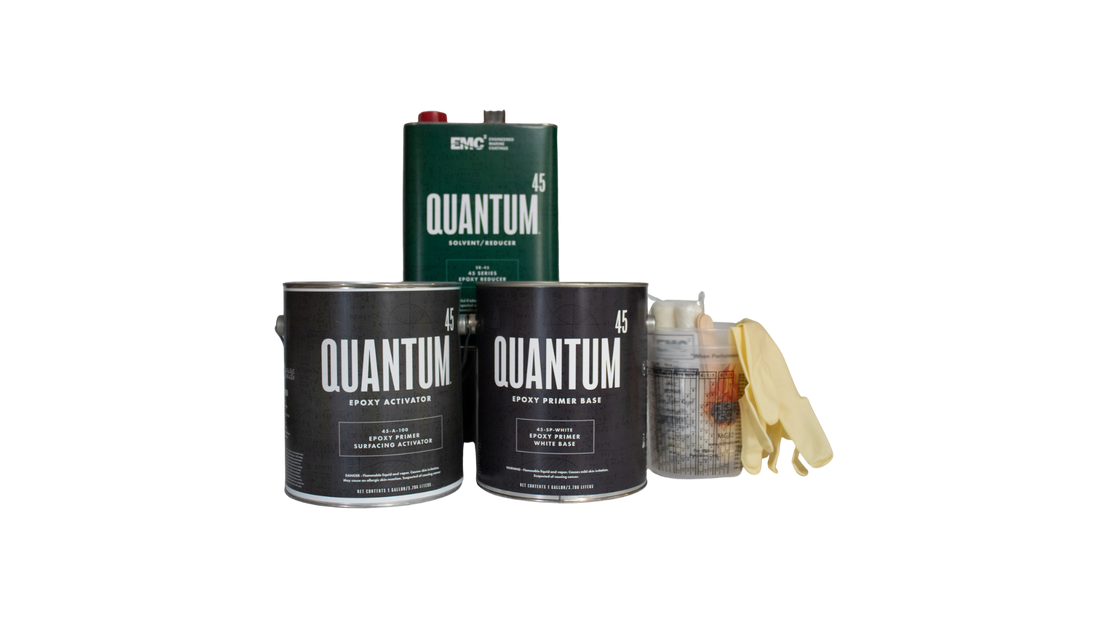Using Quantum45 Gray primer or Quantum45 white primer serves different purposes in the process of painting surfaces, and the choice between the two depends on various factors including the final paint color and the type of surface being painted.
-
Quantum45 Gray Primer:
- Color Neutralization: Gray primers are often preferred when the final paint color is dark or when you're transitioning from a darker color to a lighter one. The gray base helps neutralize the underlying surface color, preventing it from affecting the final hue.
- Enhanced Coverage: If you're painting with colors that have poor coverage, such as reds or yellows, a gray primer can provide a better base for these colors to achieve their full vibrancy.
- Depth and Shadows: Gray primers can add depth and shadows to the final paint job, creating a nuanced and richer appearance.
-
Quantum45 White Primer:
- Color Accuracy: White primers are suitable for lighter paint colors, as they maintain the true and accurate shade of the intended color without any undertones from the primer affecting it.
- Brightening Effect: White primers can enhance the brightness of light or pastel-colored paints, contributing to a crisp and clean finish.
- Reflectivity: White surfaces reflect light, and using a white primer can contribute to better light reflection, especially in spaces where natural or artificial light is limited.
In summary, choosing between a gray primer and a white primer depends on the specific characteristics of your project. If you want to ensure accurate and true colors, especially with lighter shades, a white primer is preferable. On the other hand, if you're working with darker colors or aiming for a more nuanced finish, a gray primer may be the better choice. Ultimately, the selection of primer color plays a crucial role in achieving the desired final appearance of your painted surface.

